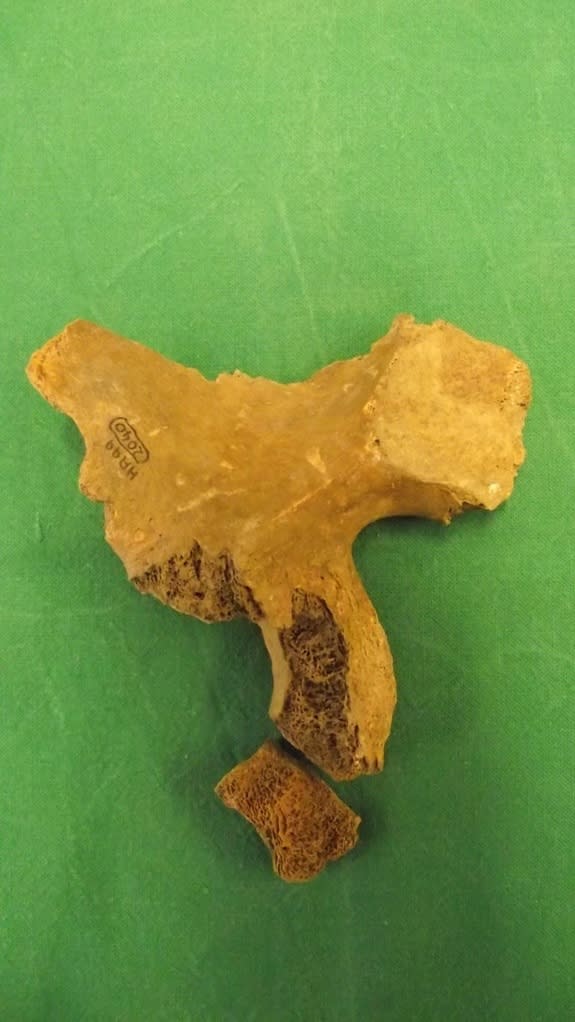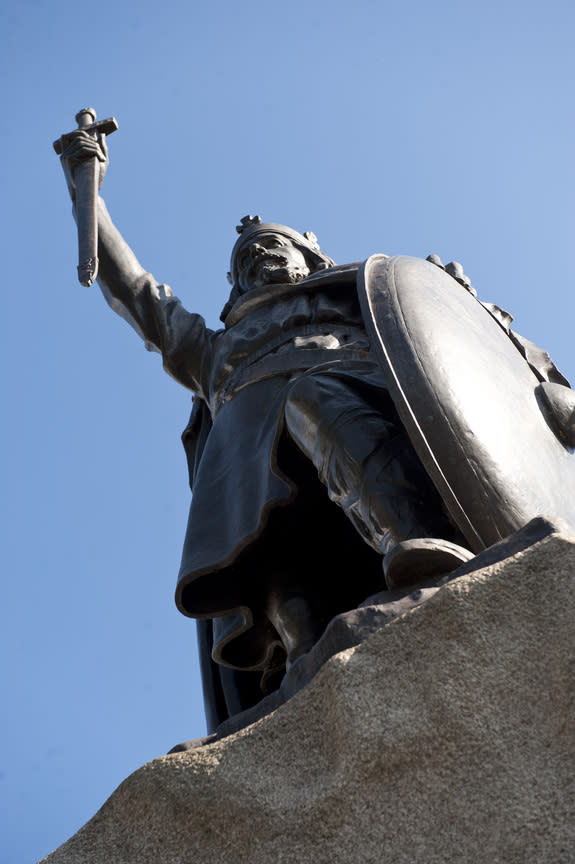Pelvic Bone in Museum Storage May Be King Alfred the Great's
A piece of an ancient pelvis bone that had been tucked away in museum storage might belong to the English King Alfred the Great or his son Edward, scholars announced Friday (Jan. 17).
Archaeologists had mounted a search to find the lost remains of Alfred the Great, who was king of Wessex and dominated England from 871 until his death in 899. Last year, researchers exhumed an unmarked grave at Saint Bartholomew's Church in Winchester, England, but none of the bodies buried there were a match with Alfred.
After that initial disappointment, the group then turned to bones in storage boxes at the Winchester City Museum that had been excavated from a nearby monastery, Hyde Abbey, in the 1990s. There, they found a promising fragment of a pelvis bone. Radiocarbon tests showed that it dates between the years 895 and 1017. Further skeletal analysis showed that the bone belonged to a man who was between 26 and 45-plus years when he died, the researchers said. [Photos: The Search for Alfred the Great's Grave]
If the remains are indeed Alfred's, the discovery would mark the second English king to be found in the United Kingdom less than two years. In 2012, archaeologists discovered the remains of King Richard III underneath a parking lot in Leicester. Last year, DNA testing helped confirm that the battle-scarred skeleton indeed belonged to Richard. The king's remains are set to be reburied this year.
Restless bones
"Given the age at death of the individual, and the probable male identity, the plausible candidates are King Alfred, [his son] King Edward the Elder, or the brother of King Edward, Æthelweard. All were buried in the Abbey," Katie Tucker, a researcher in human osteology at the University of Winchester, said in a statement.
When the pelvis bone was initially excavated in the late 1990s, it was found near the monastery's High Altar, where only Alfred and Edward had been buried, Tucker said, citing historical records.
"The discovery of the bone in a pit dug into the graves in front of the High Altar makes it far more likely that it comes from either Alfred or Edward," Tucker said.
Hyde Abbey was not Alfred's original resting place. It's believed the monarch was initially buried in the Anglo-Saxon cathedral in Winchester, called the Old Minster, in 899, though monks later moved his skeleton to New Minster and then Hyde Abbey, just outside the walls of Winchester.
Like many other Catholic institutions, Hyde Abbey was dismantled in the 16th century under Henry VIII during the so-called dissolution of the monasteries. The bodies buried at the monastery seem to have been allowed to remain, though some may have been disturbed when a prison was built on the site in the 18th century, said Barbara Yorke, professor emerita of early medieval history at the University of Winchester.
Then in the 19th century, an antiquarian claimed that he had excavated the bones of the Wessex royal household from Hyde Abbey before giving them to a rector who reburied the bones at the unmarked grave at Saint Bartholomew's Church. But when archaeologists opened that unmarked grave last year, they found the bodies of people dated from about 1100 to 1500, much later than Alfred's reign.
A documentary about the search for Alfred the Great will air on the United Kingdom's BBC2 on Jan. 21 at 9:00 p.m.
Follow Megan Gannon on Twitter and Google+. Follow us @livescience, Facebook & Google+. Original article on LiveScience.
Copyright 2014 LiveScience, a TechMediaNetwork company. All rights reserved. This material may not be published, broadcast, rewritten or redistributed.



